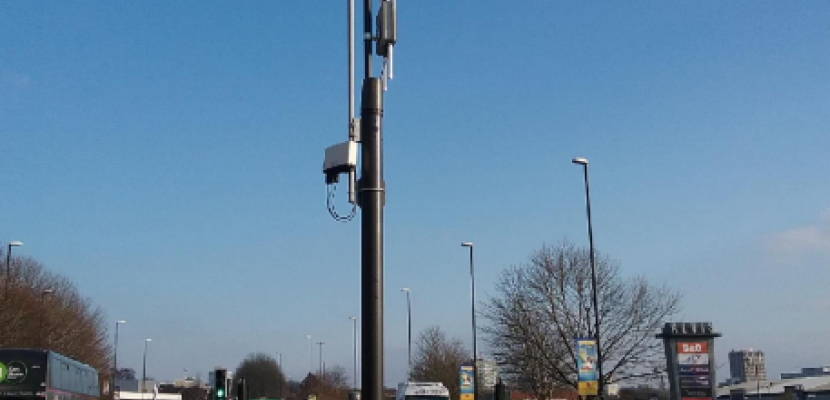Image

Published on 14 February 2019

United Kingdom
West Midlands
This is the good practice's implementation level. It can be national, regional or local.
About this good practice
CAVs offer the opportunity to improve safety on roads, enhance mobility and decrease environmental impacts all of which have positive economic benefits.
Connecting the vehicles t the environment around them is one of the major challenges for regions. Particularly around vehicle to vehicle (V2V, to infrastructure (V2I) and to traffic data (V2X).
UK CITE assessed the functionality, safety and convenience offered by CAV. It also looked at the technologies from the perspective of technology maturity and cybersecurity. The project brought together partners and stakeholders from across the transport environment including local authorities, vehicle manufacturers, infrastructure and data contractors, and universities. This created a joined up environment with a number of the partners working closely and collaboratively for the first time to overcome the challenges and create a safe and effective real world environment.
Over a period of two years the project installed and demonstrated the effectiveness of connected vehicle technologies, culminating in a live demonstration of vehicles working autonomously in the centre of Coventry and the Motorways demonstrating validated benefits from the adoption of CAV technologies.
Connecting the vehicles t the environment around them is one of the major challenges for regions. Particularly around vehicle to vehicle (V2V, to infrastructure (V2I) and to traffic data (V2X).
UK CITE assessed the functionality, safety and convenience offered by CAV. It also looked at the technologies from the perspective of technology maturity and cybersecurity. The project brought together partners and stakeholders from across the transport environment including local authorities, vehicle manufacturers, infrastructure and data contractors, and universities. This created a joined up environment with a number of the partners working closely and collaboratively for the first time to overcome the challenges and create a safe and effective real world environment.
Over a period of two years the project installed and demonstrated the effectiveness of connected vehicle technologies, culminating in a live demonstration of vehicles working autonomously in the centre of Coventry and the Motorways demonstrating validated benefits from the adoption of CAV technologies.
Expert opinion
The advent of self-driving cars will pose major challenges for cities and regions in adapting their transportation infrastructures. UK Connected Intelligent Transport Environment (UK CITE) is a project to create advanced testbeds for connected and autonomous vehicles in a real-world environment. The project UK CITE has involved many actors coming from the public sector, private sector, and academia to test autonomous vehicles and their capacities to interact vehicle to vehicle (V2V), vehicle to infrastructure (V2I) and vehicle to data (V2X). The experience of UK CITE can be of interest for regions and cities aiming to create their testbeds for autonomous vehicles. Moreover, regions and cities can learn from the main difficulties and challenges that the project UK CITE has faced to improve their testbeds and future deployment of new transportation infrastructures.
Works at
Interreg Europe Policy Learning Platform
Resources needed
The project cost £5.46m of which £3.32m was funded by the UK government through INNOVATE UK.
Partners were required with the following responsibilities and skill sets:
National Roads
Urban Roads
Data Collection/Use
Road Infrastructure Maintenance
CAV Manufacture
Research
Partners were required with the following responsibilities and skill sets:
National Roads
Urban Roads
Data Collection/Use
Road Infrastructure Maintenance
CAV Manufacture
Research
Evidence of success
Demonstrated safe and effective use of CAVs in a busy city centre environment
Proof of concept that CAV can improve safety, mobility and have a positive effective on the environment.
Helped to create a more joined up environment in local traffic planning as the most significant players came together cooperatively and gained a better understanding of each other's problems and constraints.
The project has been extended for a further 8 years and given a wider brief to work over a greater area
Proof of concept that CAV can improve safety, mobility and have a positive effective on the environment.
Helped to create a more joined up environment in local traffic planning as the most significant players came together cooperatively and gained a better understanding of each other's problems and constraints.
The project has been extended for a further 8 years and given a wider brief to work over a greater area
Potential for learning or transfer
This is a good practice that should be considered in any and every major city in Europe. Whilst some of the technologies and experience are directly transferable, the learning from carrying out the project is arguably more important. Transport and planning for our connected future cites needs cost effective solutions that can be rolled out across the continent. The more that the major players in both national and local transport environments run this kind of project together the more they will understand the changes that are required both in their relationships and in the infrastructures that they are responsible for.
Further information
Website
Good practice owner
You can contact the good practice owner below for more detailed information.
Organisation
Coventry University Enterprises Ltd

United Kingdom
West Midlands
Contact
Operations and Development Manager
